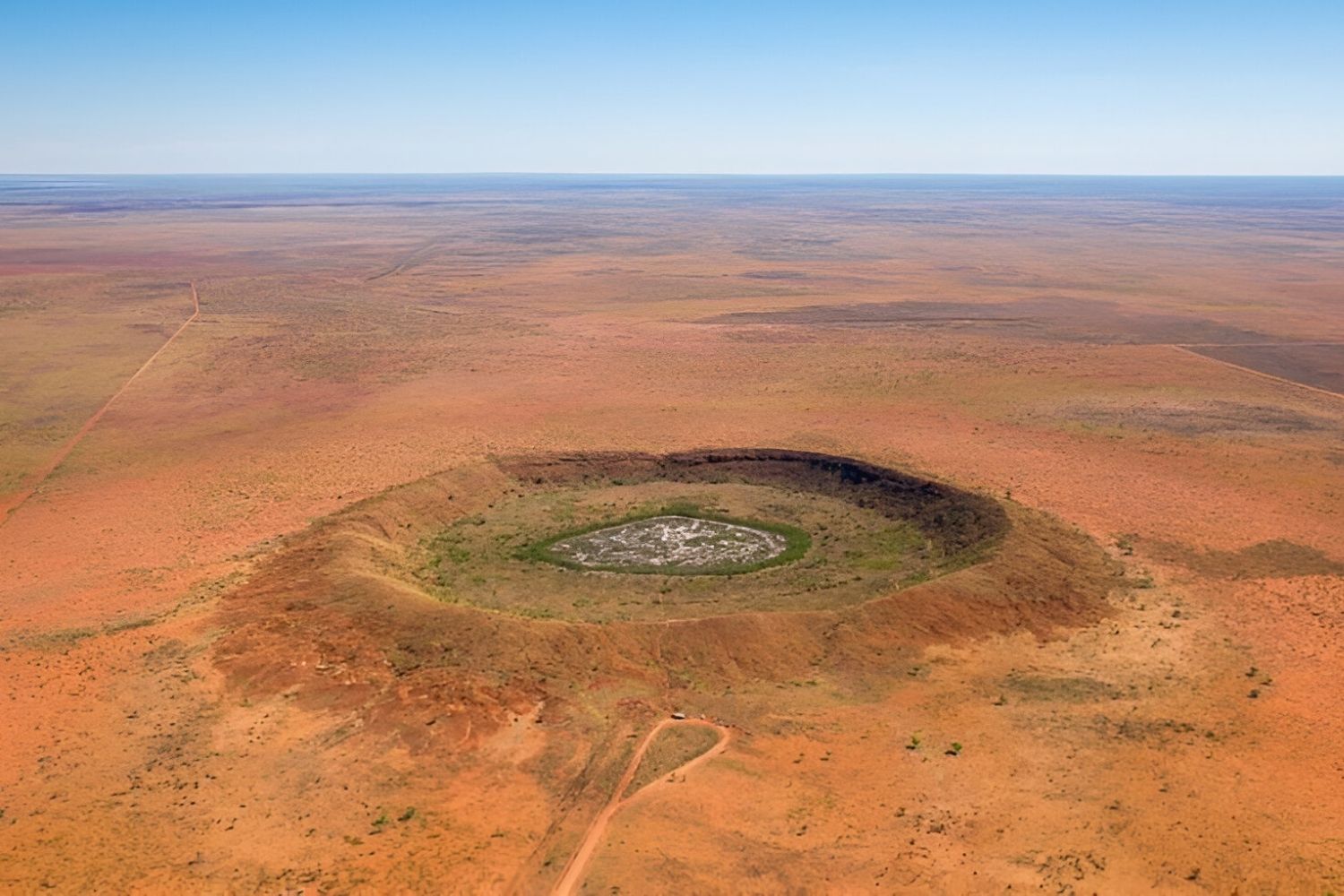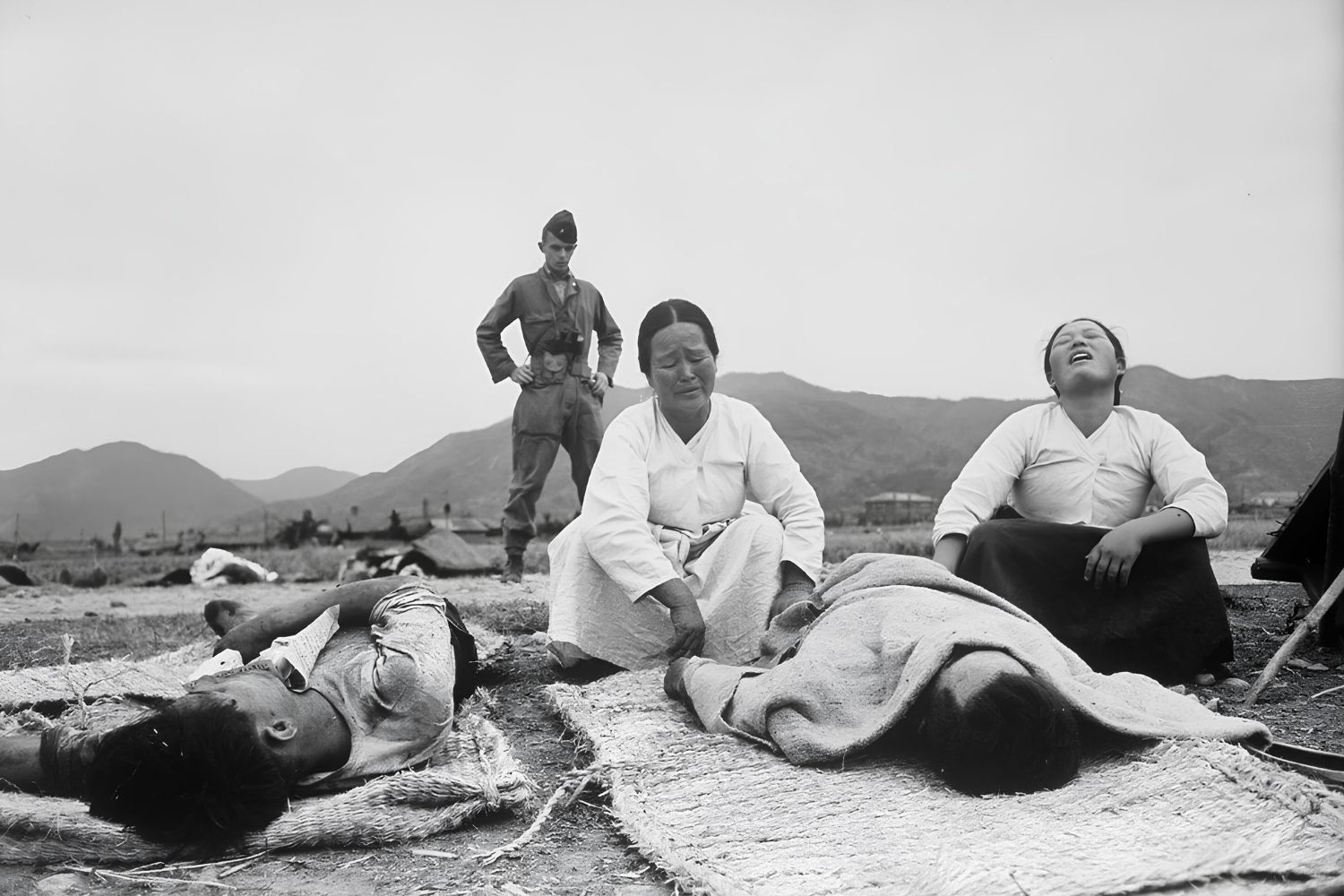
Did you know that the Yarrabubba Meteor Crater is one of Earth's oldest impact sites? This ancient crater, located in Western Australia, is estimated to be around 2.2 billion years old! That's older than the dinosaurs and even predates the formation of complex life on our planet. Imagine a time when Earth was a vastly different place, with no plants or animals as we know them today. The impact that created Yarrabubba was so powerful, it might have played a role in ending a global ice age. Scientists believe the heat from the impact could have melted ice, releasing water vapor into the atmosphere and warming the planet. This fascinating site offers a glimpse into Earth's distant past, providing clues about how our planet evolved over billions of years.
Key Takeaways:
- Yarrabubba Meteor Crater in Western Australia is the oldest known impact crater on Earth, offering clues to our planet's ancient history and geological evolution.
- Scientists study Yarrabubba to understand Earth's early atmosphere, impact events, and geological changes, inspiring future research and contributing to planetary science.
Yarrabubba Meteor Crater: A Geological Wonder
Yarrabubba Meteor Crater, located in Western Australia, is a fascinating site that holds secrets of Earth's ancient past. This crater is not just a geological feature; it's a window into the history of our planet. Let's explore some intriguing facts about this remarkable site.
-
Oldest Known Impact Crater
Yarrabubba is considered the oldest known impact crater on Earth, estimated to be around 2.229 billion years old. This makes it a crucial piece of the puzzle in understanding Earth's early history. -
Location in Western Australia
Situated in a remote part of Western Australia, Yarrabubba is not easily accessible. Its location adds to the mystery and allure of this ancient site. -
Discovery in the 1970s
The crater was first identified in the 1970s through geological surveys. Scientists were intrigued by the unusual rock formations and began to study the area more closely. -
Size and Structure
Yarrabubba spans about 70 kilometers in diameter. Although erosion has altered its appearance, the original impact structure was massive. -
Impact on Earth's Climate
The impact that created Yarrabubba may have played a role in ending a global ice age. The collision could have released significant amounts of water vapor, influencing the planet's climate. -
Hidden Beneath the Surface
Much of the crater is buried beneath layers of sediment and rock. This makes it challenging to study, but also preserves its ancient features.
Geological Significance of Yarrabubba
The Yarrabubba Crater is not just a point of interest for its age; it also offers insights into geological processes and Earth's evolution. Here are some facts highlighting its significance.
-
Clues to Earth's Early Atmosphere
Studying the minerals and rocks at Yarrabubba helps scientists understand the composition of Earth's early atmosphere and surface conditions. -
Unique Mineral Deposits
The impact created unique mineral deposits, including shocked quartz and other high-pressure minerals. These provide evidence of the intense forces involved in the impact. -
Erosion and Preservation
Despite being heavily eroded, the crater's core remains well-preserved. This allows geologists to study its structure and learn more about ancient impact events. -
Research Opportunities
Yarrabubba offers endless opportunities for research. Scientists continue to study the site to uncover more about Earth's geological history. -
Comparison with Other Craters
By comparing Yarrabubba with other impact sites, researchers can better understand the frequency and effects of meteor impacts on Earth.
The Impact Event and Its Aftermath
The event that created Yarrabubba was a significant moment in Earth's history. Let's delve into the impact and its aftermath.
-
Meteor Size Estimation
The meteor that struck Yarrabubba is estimated to have been several kilometers in diameter. Its impact would have released an enormous amount of energy. -
Global Effects
The collision likely had global effects, potentially altering weather patterns and contributing to changes in the Earth's climate. -
Crater Formation Process
The impact would have created a massive explosion, forming a crater through a combination of vaporization, melting, and fracturing of the Earth's crust. -
Long-term Geological Changes
Over billions of years, the crater has undergone significant geological changes, including erosion and sedimentation, which have shaped its current appearance. -
Role in Geological Studies
Yarrabubba serves as a natural laboratory for studying impact processes and their effects on Earth's geology.
Yarrabubba's Place in Earth's History
Understanding Yarrabubba's place in Earth's history helps us appreciate its importance. Here are some facts that highlight its historical significance.
-
Pre-Cambrian Era
The impact occurred during the Pre-Cambrian era, a time when life on Earth was just beginning to evolve. -
Connection to Ancient Ice Ages
Yarrabubba's impact may be linked to the end of a global ice age, providing clues about the planet's climatic history. -
Insights into Earth's Evolution
Studying Yarrabubba helps scientists piece together the story of Earth's evolution, from its early atmosphere to the development of life. -
Influence on Geological Theories
The crater has influenced geological theories about impact events and their role in shaping Earth's surface. -
A Window into the Past
Yarrabubba offers a unique glimpse into the distant past, allowing us to explore a time when the Earth was vastly different from today.
Modern Exploration and Research
Modern technology and research methods have opened new avenues for exploring Yarrabubba. Let's look at how scientists are studying this ancient crater today.
-
Remote Sensing Techniques
Scientists use remote sensing techniques, such as satellite imagery, to study the crater's structure and composition from afar. -
Field Expeditions
Field expeditions to Yarrabubba involve collecting rock samples and conducting on-site analyses to gather data about the impact event. -
Advanced Dating Methods
Advanced dating methods, like isotopic analysis, help determine the precise age of the crater and its impact on Earth's history. -
Collaboration Among Scientists
Researchers from around the world collaborate to study Yarrabubba, sharing data and insights to build a comprehensive understanding of the site. -
Public Interest and Education
Yarrabubba has captured the public's interest, leading to educational programs and initiatives to raise awareness about its significance.
Yarrabubba's Legacy and Future
The legacy of Yarrabubba extends beyond its geological significance. It continues to inspire curiosity and research, shaping our understanding of Earth's past and future.
-
Inspiration for Future Research
Yarrabubba inspires future generations of scientists to explore Earth's history and the role of impact events in shaping our planet. -
Potential for New Discoveries
As technology advances, new discoveries about Yarrabubba and its impact on Earth's history are likely to emerge. -
Contributions to Planetary Science
The study of Yarrabubba contributes to planetary science, offering insights into impact events on other planets and moons. -
Preservation Efforts
Efforts to preserve Yarrabubba ensure that future generations can continue to study and learn from this ancient site. -
A Symbol of Earth's Resilience
Yarrabubba stands as a symbol of Earth's resilience, having withstood billions of years of geological change and evolution.
Fun Facts About Yarrabubba
Beyond its scientific significance, Yarrabubba has some fun and quirky aspects that make it even more intriguing.
-
Name Origin
The name "Yarrabubba" is derived from the local Aboriginal language, reflecting the cultural significance of the area. -
A Hidden Gem
Despite its importance, Yarrabubba remains relatively unknown to the general public, making it a hidden gem for those interested in geology. -
A Geological Puzzle
Yarrabubba is like a giant geological puzzle, with scientists piecing together clues to understand its formation and impact. -
A Site of Wonder
For those lucky enough to visit, Yarrabubba offers a sense of wonder and awe, as they stand on the site of one of Earth's oldest known impact events.
Yarrabubba's Ancient Impact
Yarrabubba Meteor Crater isn't just a geological wonder; it's a window into Earth's ancient past. This crater, located in Western Australia, is believed to be the oldest known impact site on our planet, dating back about 2.2 billion years. Its formation coincides with the end of a global ice age, suggesting that the impact might have played a role in climate change by releasing greenhouse gases. This discovery has provided scientists with valuable insights into Earth's climatic history and the role meteor impacts have played in shaping it. Yarrabubba's story reminds us of the dynamic and ever-changing nature of our planet. As we continue to study such sites, we gain a deeper understanding of Earth's history and the forces that have shaped it over billions of years. Yarrabubba stands as a testament to the power of cosmic events.
Frequently Asked Questions
Was this page helpful?
Our commitment to delivering trustworthy and engaging content is at the heart of what we do. Each fact on our site is contributed by real users like you, bringing a wealth of diverse insights and information. To ensure the highest standards of accuracy and reliability, our dedicated editors meticulously review each submission. This process guarantees that the facts we share are not only fascinating but also credible. Trust in our commitment to quality and authenticity as you explore and learn with us.


